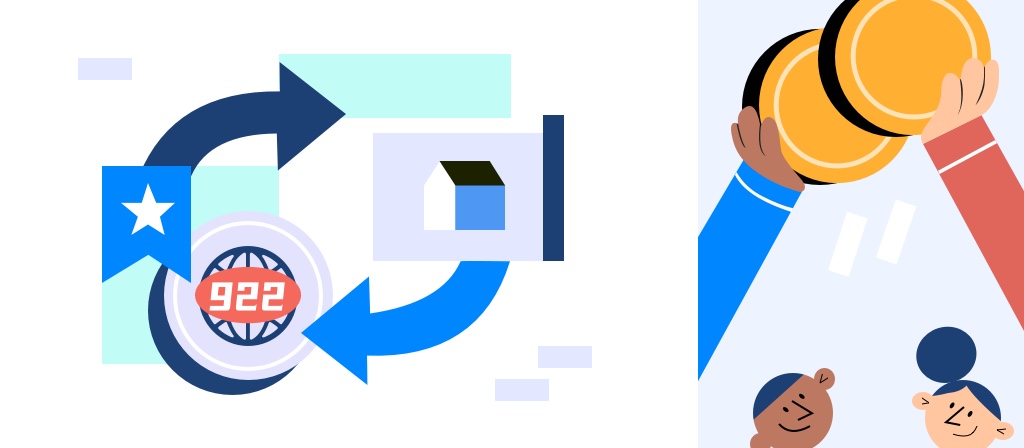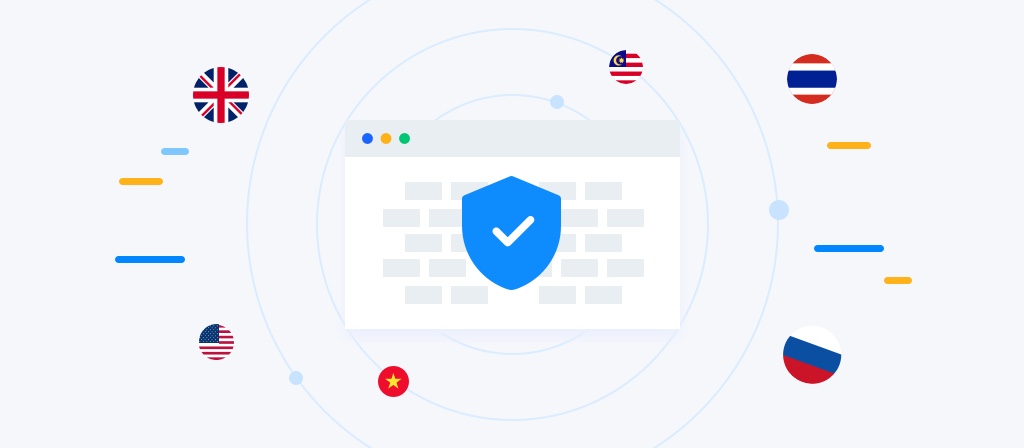
As artificial intelligence (AI) technology continues to advance, more and more industries are relying on AI robots to automate tasks and enhance efficiency. However, AI robots often face challenges such as access restrictions, anti-bot mechanisms, and data privacy protection, which can hinder their operations. This is where proxy services come in.
Proxies can help AI robots bypass these obstacles, ensuring their operations remain efficient and anonymous. In this article, we’ll discuss how AI robots can optimize their operations with proxies and how to properly configure proxies to boost AI robot performance.
Why Does Your AI Robot Need a Proxy?
When executing tasks, AI robots often need to interact with multiple online services, such as web scraping, social media analysis, and ad monitoring. However, these tasks can encounter several issues, one of the most common being being detected and blocked by anti-automation systems. Proxies play a crucial role in solving this problem. Here’s how proxies can help AI robots:
Bypass Access Restrictions and Blocks
Sending too many requests from a single IP address can lead to blocks or bans. Proxies provide multiple IP addresses to distribute the requests, helping to prevent the blocking of a single IP.
Masking the Real IP Address
Proxies help AI robots hide their real IP addresses, enhancing anonymity and preventing websites from tracking and identifying automated behavior. This allows the AI robot to remain hidden and perform tasks without detection.
Bypass Geo-Restrictions
Some websites or services restrict access based on the geographical location of the IP address. Proxies enable AI robots to appear as if they are accessing the web from different regions, allowing them to bypass geographic restrictions and access content that would otherwise be blocked.
Improve Efficiency and Stability
Proxy services also provide enhanced connection stability, preventing interruptions or limitations caused by overusing the same IP address, ensuring that the AI robot’s tasks run smoothly.
How Proxies Work for AI Robots: The Invisible Shield
Proxies serve as the “invisible shield” for AI robots, performing several important functions in the background. Here’s how they work:
IP Address Replacement
Proxies help AI robots switch IP addresses, providing a pool of different IPs that can be rotated during tasks. This prevents the AI robot from being blocked due to too many requests from the same IP.
Simulating Multiple User Identities
Proxies allow AI robots to simulate the behavior of multiple users by using various IPs and user behaviors, reducing the risk of being flagged as automated actions. This is crucial for tasks that involve high-volume access, such as web scraping.
Dynamic IP Rotation
Rotating proxies allow the AI robot to change its IP address automatically during tasks, ensuring that it doesn’t use the same IP for extended periods. This feature is critical for long-term, high-frequency tasks like large-scale data scraping.
Enhanced Anonymity and Privacy Protection
Proxies help AI robots maintain privacy by masking their real identity and preventing them from being tracked. This increases security and protects sensitive data during the robot’s operations.

Choosing the Right Proxy for Your AI Operations
The needs of AI robots vary depending on the task and the execution environment. Therefore, selecting the right type of proxy is essential. Different proxy types are suitable for different applications. Below are the most common proxy types and their advantages:
Residential Proxies
Residential proxies provide IPs from real residential networks, making them difficult to detect as proxy traffic. These are ideal for tasks that require high anonymity and stability, such as web scraping, ad verification, and social media analysis. Residential proxies mimic real user behavior, minimizing the chances of being flagged by anti-bot systems.
Datacenter Proxies
Datacenter proxies come from professional data centers, offering higher connection speed and stability. These proxies are ideal for high-volume, high-concurrency data scraping tasks. While cheaper than residential proxies, they are easier for websites to detect as bot traffic, so they may need to be combined with other anti-detection techniques.
Mobile Proxies
Mobile proxies simulate traffic from real mobile networks, making them ideal for accessing mobile applications or social media platforms. These proxies allow AI robots to appear as if they are using mobile devices, bypassing restrictions based on device type.
Rotating Proxies
Rotating proxies provide a dynamic IP pool for AI robots, automatically switching IP addresses during tasks. This prevents the use of the same IP address for too long, which can lead to blocking. This is essential for tasks that involve large-scale data collection or high-frequency requests.
Main Use Cases: AI Robots + Proxies
The combination of proxies and AI robots unlocks many automation applications, improving efficiency and discretion. Here are some common use cases:
Automated Web Scraping
AI robots, through proxies, can bypass anti-bot systems to scrape large volumes of data from websites, collecting product details, market data, competitor analysis, etc. This is particularly valuable for market research, price monitoring, and product analysis.
Ad Campaign Monitoring
Advertising platforms often limit ad display and clicks based on IP addresses. AI robots, using proxies, can simulate users from different regions and verify the accuracy of ad placement and effectiveness, ensuring that ads are being displayed as intended.

Social Media Analysis
Social media platforms are very strict about automation and often block bots. AI robots, using proxies, can bypass these restrictions and analyze global social media data, sentiment trends, and brand performance.
Competitor Analysis
AI robots can regularly access competitor websites to gather data about their products, prices, promotions, and more, providing valuable insights for businesses to optimize their own strategies.
Setting Up Proxies for Your AI Robot
Here are the steps to configure proxies for your AI robot:
Choose a Proxy Provider
Based on your task requirements, select a reliable proxy service provider that ensures high quality, speed, and stability. Avoid using free proxies or low-quality services.
Integrate Proxies into Your AI Code
Integrate proxies into the AI robot’s code, typically via an API or configuration file. Make sure the integration is seamless and supports multiple proxy types and IP rotation.
Test Thoroughly
Before going live, conduct thorough testing by simulating different access scenarios. Ensure that proxies function correctly, IP rotation works as expected, and the proxy provider is reliable.
Scale Up (Optional but Wise)
As the task volume increases, scale up your proxy pool by adding more IP addresses to handle larger-scale operations, ensuring the AI robot remains stable even during high-volume data collection or requests.
Avoid Pitfalls
Be cautious when selecting proxies. Opt for high-quality proxies from reliable sources to minimize the risk of being detected. Poor-quality proxies can increase the likelihood of getting blocked by anti-bot systems.

Conclusion
Proxies are a key tool for enhancing the efficiency and discretion of AI robots. They help bypass access restrictions, protect privacy, and improve stability during operations. When selecting and configuring proxies, it’s important to choose the right proxy type based on the specific task, and to conduct thorough testing to ensure the proxy service is stable and effective.
Whether you’re scraping data, monitoring ads, or analyzing social media, integrating proxies with your AI robots will improve efficiency, reduce the risk of blocking, and ensure the tasks run smoothly. By properly configuring proxies, your AI robots will be able to perform a wide range of automated tasks more effectively, optimizing your operations and safeguarding sensitive data.



